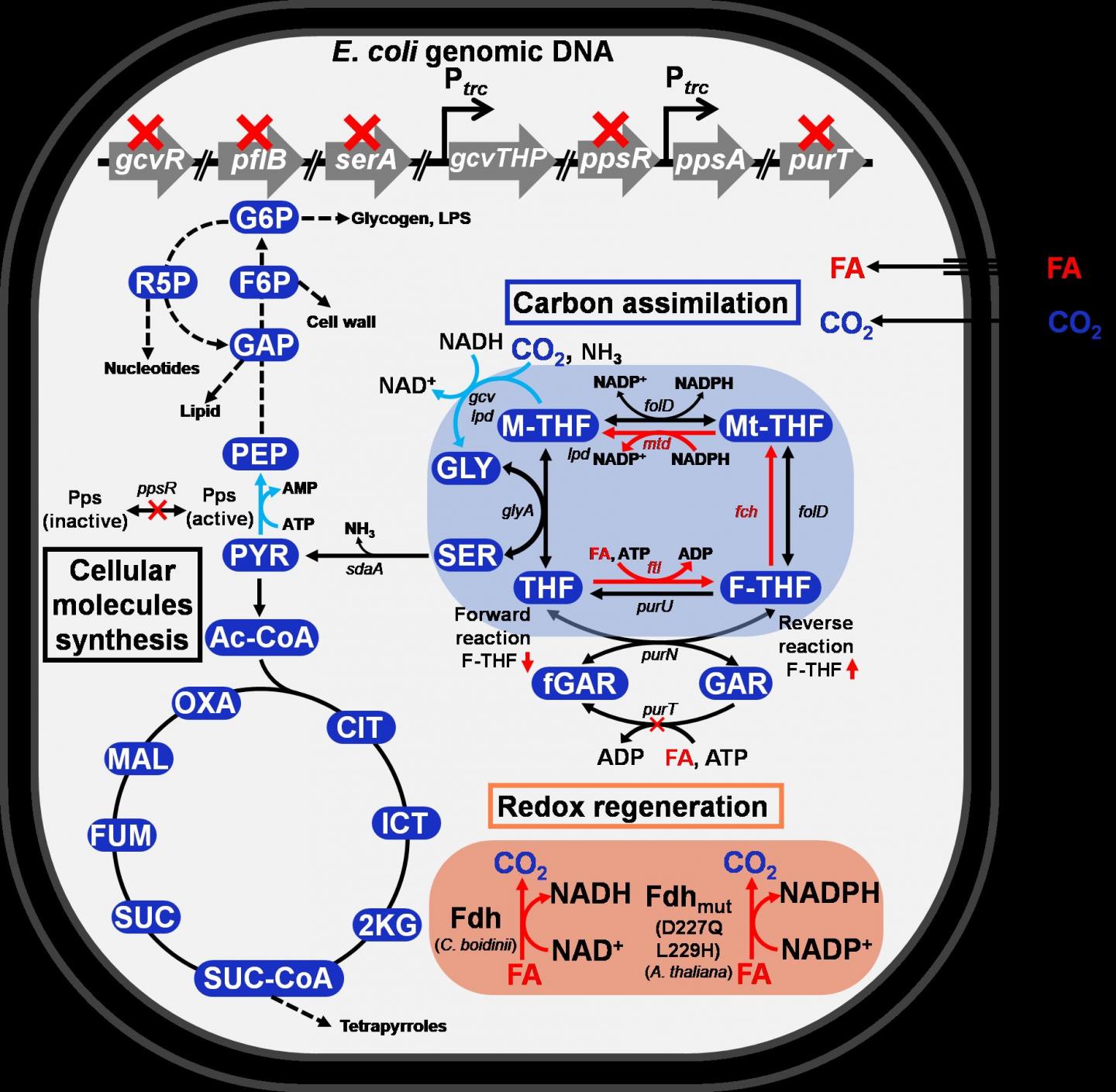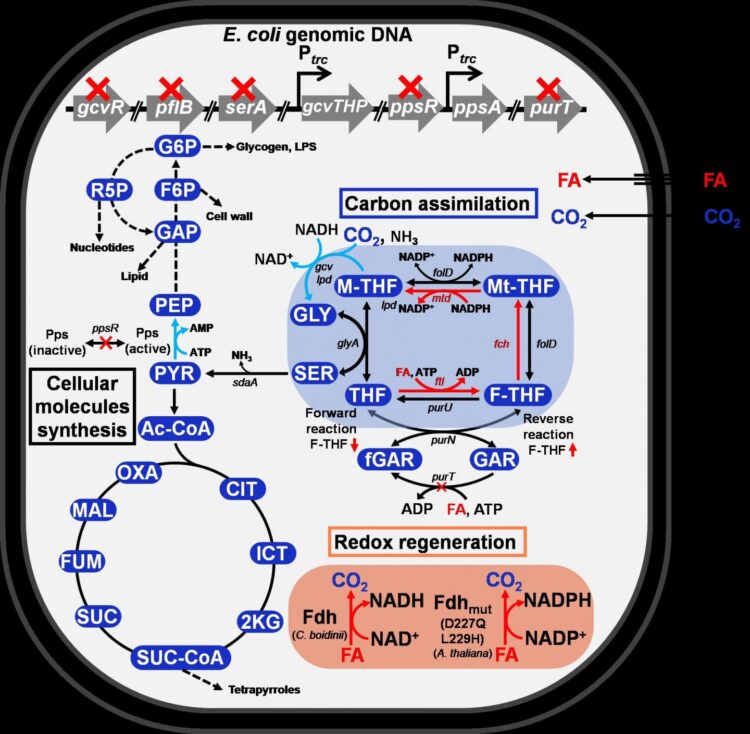An E. coli strain that can grow to a relatively high cell density solely on CO?and formic acid was developed by employing metabolic engineering

Credit: KAIST
Most biorefinery processes have relied on the use of biomass as a raw material for the production of chemicals and materials. Even though the use of CO2 as a carbon source in biorefineries is desirable, it has not been possible to make common microbial strains such as E. coli grow on CO2.
Now, a metabolic engineering research group at KAIST has developed a strategy to grow an E. coli strain to higher cell density solely on CO2 and formic acid. Formic acid is a one carbon carboxylic acid, and can be easily produced from CO2 using a variety of methods. Since it is easier to store and transport than CO2, formic acid can be considered a good liquid-form alternative of CO2.
With support from the C1 Gas Refinery R&D Center and the Ministry of Science and ICT, a research team led by Distinguished Professor Sang Yup Lee stepped up their work to develop an engineered E. coli strain capable of growing up to 11-fold higher cell density than those previously reported, using CO2 and formic acid as sole carbon sources. This work was published in Nature Microbiology on Sept. 28.
Despite the recent reports by several research groups on the development of E. coli strains capable of growing on CO2 and formic acid, the maximum cell growth remained too low (optical density of around 1) and thus the production of chemicals from CO2 and formic acid has been far from realized.
The team previously reported the reconstruction of the tetrahydrofolate cycle and reverse glycine cleavage pathway to construct an engineered E. coli strain that can sustain growth on CO2 and formic acid. To further enhance the growth, the research team introduced the previously designed synthetic CO2 and formic acid assimilation pathway, and two formate dehydrogenases.
Metabolic fluxes were also fine-tuned, the gluconeogenic flux enhanced, and the levels of cytochrome bo3 and bd-I ubiquinol oxidase for ATP generation were optimized. This engineered E. coli strain was able to grow to a relatively high OD600 of 7~11, showing promise as a platform strain growing solely on CO2 and formic acid.
Professor Lee said, “We engineered E. coli that can grow to a higher cell density only using CO2 and formic acid. We think that this is an important step forward, but this is not the end. The engineered strain we developed still needs further engineering so that it can grow faster to a much higher density.”
Professor Lee’s team is continuing to develop such a strain. “In the future, we would be delighted to see the production of chemicals from an engineered E. coli strain using CO2 and formic acid as sole carbon sources,” he added.
###
-About KAIST
KAIST is the first and top science and technology university in Korea. KAIST was established in 1971 by the Korean government to educate scientists and engineers committed to the industrialization and economic growth of Korea.
Since then, KAIST and its 64,739 graduates have been the gateway to advanced science and technology, innovation, and entrepreneurship. KAIST has emerged as one of the most innovative universities with more than 10,000 students enrolled in five colleges and seven schools including 1,039 international students from 90 countries.
On the precipice of its semi-centennial anniversary in 2021, KAIST continues to strive to make the world better through the pursuit in education, research, entrepreneurship, and globalization.
Media Contact
Younghye Cho
[email protected]
Original Source
https:/
Related Journal Article
http://dx.





